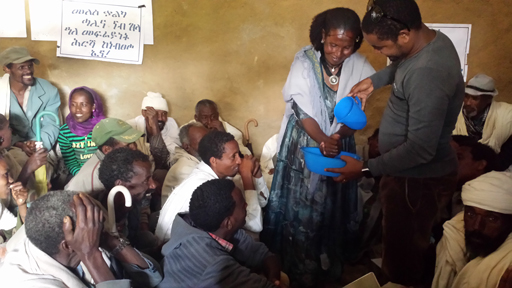11.3 Strategies for community mobilisation
Much research has been done on good practice in community mobilisation and the evidence for effective strategies tends to come from these studies and experiences. They show that community mobilisation can change attitudes, norms, practices and individual behaviours (Pact Tanzania, 2006). Figure 11.2 shows a community mobilisation process in which a demonstration of effective handwashing practice is taking place.

Community mobilisation is not a task for one person working on their own. It needs a team of people each with different roles who work collaboratively with the community. The team needs to include technical support staff and people with skills in project management as well as the key facilitators who have the main role of liaising with the community.
Developing a strategy for community mobilisation to address a particular problem requires:
- knowing your community and understanding the local situation
- identifying the purpose for mobilising the community – this requires understanding of the community’s goals
- assessing the issues and identifying possible projects – this needs skills to assess the problems and align them to the purpose of the community mobilisation
- obtaining wide community support – it is essential to build good relationships with individuals and groups within the community; it is very important that the facilitator has excellent communication skills
- prioritising projects and developing implementation plans
- pooling of available resources, including labour
- gathering and reflecting on feedback from the community
- refining and improving activities, based on the findings and feedback from the community.
The key steps of knowing your community and prioritising projects are described in more detail in the following sections.
11.2 Benefits of community mobilisation
